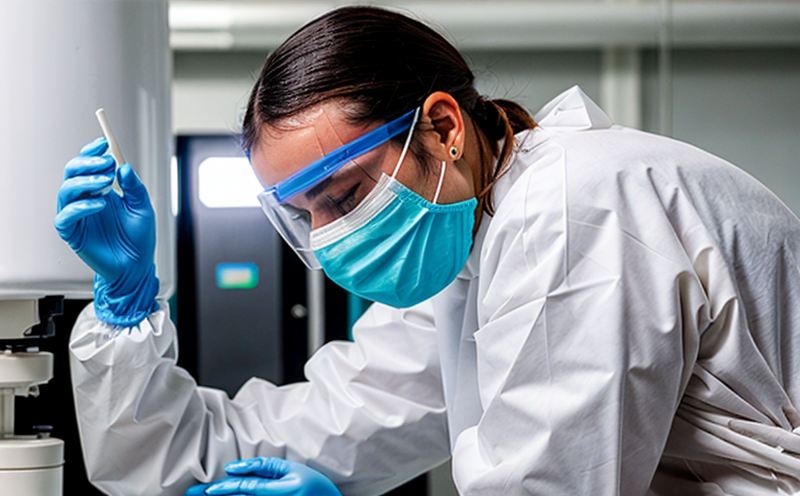CIE 155 Ultraviolet Radiation Photobiological Safety Testing of Lamps
The CIE 155 Ultraviolet (UV) Radiation Photobiological Safety Testing is a critical service for ensuring the safety of lamps, particularly those that emit UV radiation. This testing is essential in sectors such as lighting design, consumer electronics, and healthcare where exposure to harmful levels of UV can be a concern. The primary objective of this test is to evaluate whether a lamp complies with the photobiological safety requirements set by international standards.
The CIE 155 standard defines the spectral power distribution that represents the risk caused by exposure to ultraviolet radiation from lamps, and it aims to prevent unnecessary biological effects such as skin irritation or damage. This service is particularly relevant for manufacturers of LED lamps, CFLs (compact fluorescent lights), and other lighting solutions that emit UV light.
Compliance with CIE 155 is mandatory in many regions where there are regulations governing the safety of products emitting ultraviolet radiation. This ensures that consumers are protected from potential health risks associated with over-exposure to UV. For quality managers, compliance officers, and R&D engineers, this service provides a clear pathway to ensure product safety and regulatory compliance.
The testing process involves several steps. First, the lamp is subjected to photobiological safety evaluation under controlled conditions that simulate real-world use scenarios. This includes measuring the spectral power distribution of the lamp at various angles and distances. The test apparatus used for this purpose typically consists of a spectroradiometer capable of measuring UV radiation intensity over a wide range.
During the testing process, it is crucial to prepare the specimen correctly to ensure accurate results. This involves cleaning the lamp surface thoroughly to remove any contaminants that could interfere with measurement accuracy. The lamp should also be placed in a test chamber designed to simulate typical usage environments such as indoor or outdoor conditions. Once prepared, the lamp is exposed to UV radiation for a set duration while being monitored by the spectroradiometer.
The results of this testing are then analyzed according to CIE 155 standards. If the lamp does not meet the specified thresholds, corrective measures must be taken before retesting. Compliance with these stringent requirements ensures that lamps can be safely used in a wide range of applications without posing risks to human health.
For quality managers and R&D engineers, this service provides invaluable insights into the photobiological safety performance of their products. By identifying any discrepancies early on, they can make necessary adjustments to design specifications or production processes. This not only enhances product reliability but also minimizes potential liabilities associated with non-compliance.
The importance of CIE 155 testing cannot be overstated in today’s increasingly regulated environment. Non-compliance can lead to costly recalls and damage to a company's reputation, making it imperative for manufacturers to stay ahead of regulatory requirements by conducting thorough photobiological safety assessments.
Scope and Methodology
| Parameters | Description |
|---|---|
| Spectral Power Distribution Measurement | Precision spectroradiometer used to measure the spectral power distribution of the lamp over a wide range. |
| Exposure Duration | The duration for which the lamp is exposed to UV radiation in controlled conditions. |
| Environmental Simulation | Test chamber simulating indoor and outdoor usage environments. |
| Acceptance Criteria | Description |
|---|---|
| Radiant Flux Limits | The maximum allowable radiant flux of UV radiation for different wavelengths. |
| Spectral Power Distribution Compliance | The lamp must comply with the spectral power distribution limits defined by CIE 155. |
Why Choose This Test
- Ensures compliance with international standards such as CIE 155.
- Protects consumers from potential health risks associated with over-exposure to UV radiation.
- Provides valuable insights into the photobiological safety performance of products.
- Minimizes potential liabilities and costs associated with non-compliance.
- Enhances product reliability through early identification of discrepancies.
Quality and Reliability Assurance
The rigorous nature of CIE 155 testing ensures that only lamps meeting the highest safety standards are approved for commercial use. This process not only enhances consumer confidence but also contributes to a safer market environment overall.
By adhering to these stringent testing protocols, manufacturers demonstrate their commitment to quality and reliability. The detailed reports generated from this testing serve as proof of compliance with international standards, which is essential for meeting regulatory requirements worldwide.
The continuous improvement in lighting technology has made it possible for consumers to enjoy innovative solutions that offer both functionality and safety. With CIE 155 testing, we ensure that these advancements do not come at the expense of user health or well-being.





